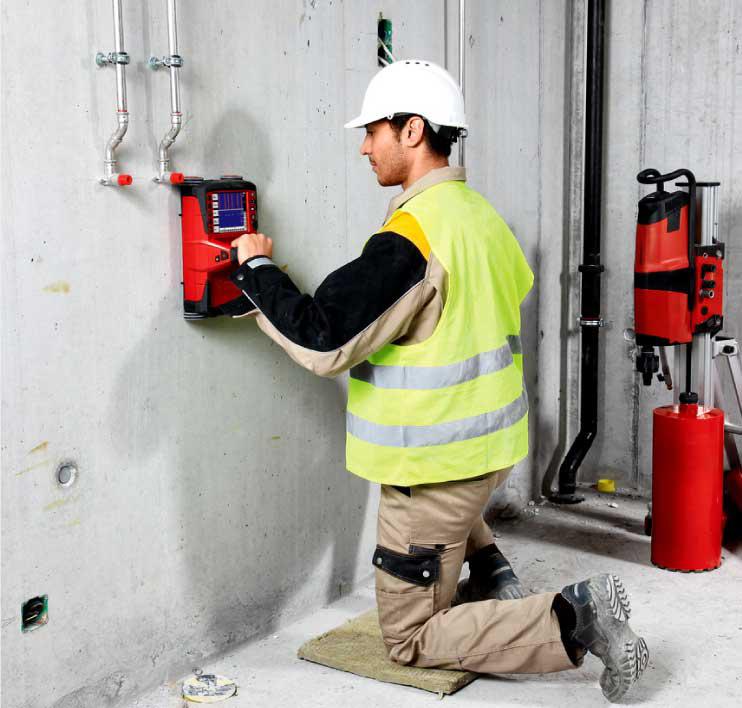RainierGPR Concrete Scanning: Expert Insights and Ideal Practices
Exploring the Depths: A Comprehensive Guide to Concrete Scanning and Its Diverse Applications
In the realm of construction and framework advancement, the meticulous procedure of concrete scanning holds a crucial duty in making certain the structural integrity and safety and security of projects. As modern technology continues to develop, the applications of concrete scanning have expanded much beyond mere surface-level assessments.
Value of Concrete Scanning
Understanding the relevance of concrete scanning is critical in making certain the safety and security and stability of structures during construction and improvement tasks. Concrete scanning uses sophisticated innovations such as ground-penetrating radar (GPR) and electromagnetic induction to spot embedded things, spaces, or other abnormalities within concrete frameworks - RainierGPR Concrete Scanning. By carrying out comprehensive scans before exploration, cutting, or coring right into concrete, building groups can avoid unintended damages to essential structural aspects like rebar, avenues, or post-tension cables. This positive approach not just protects against pricey repair services and project hold-ups yet likewise improves overall construction safety by reducing the threat of architectural failures or collapses because of endangered integrity.
Additionally, concrete scanning plays a pivotal function in guaranteeing conformity with building regulations and policies that mandate the security of existing structural elements during construction activities. By accurately drawing up the inner make-up of concrete, scanning technologies make it possible for building and construction specialists to make enlightened choices that maintain the architectural security and longevity of buildings and framework projects. Fundamentally, the significance of concrete scanning lies in its capacity to protect both the architectural stability and the workers associated with building and construction undertakings.
Technologies Used in Concrete Scanning
Concrete scanning depends on sophisticated innovations such as ground-penetrating radar (GPR) and electromagnetic induction to accurately find ingrained objects and anomalies within concrete structures. Ground-penetrating radar operates by releasing high-frequency electro-magnetic waves right into the concrete. When these waves come across different products or voids within the concrete, they get better to the surface area, allowing the GPR system to create an in-depth subsurface image. This innovation is especially effective in locating rebar, post-tension wires, avenues, and other things installed in concrete.
Electro-magnetic induction, on the other hand, functions by producing electromagnetic fields around a concrete structure with a transmitter coil. When metal objects exist within the concrete, they disrupt these electromagnetic areas, triggering eddy currents to flow via the steel. By gauging the modifications in the magnetic fields with a receiver coil, the system can identify the area of metal items in the concrete.
These cutting-edge technologies play a critical duty in non-destructive testing, making sure the safety and integrity of concrete frameworks in various sectors.
Applications in Construction Sector
Within the building and construction sector, concrete scanning modern technology locates diverse applications that enhance task efficiency and security. Additionally, concrete scanning is used for finding gaps, such as air pockets or areas of wear and tear within concrete, which can jeopardize the total stamina of a framework. Concrete scanning plays an essential role in top quality control by confirming the thickness of concrete covers over support, ensuring conformity with design requirements and criteria.

Safety Benefits of Concrete Scanning
In the realm of construction safety, the application of concrete scanning technology provides a paramount advantage in preemptively identifying potential threats and fortifying architectural stability. By making use of innovative scanning go to the website approaches such as ground-penetrating radar (GPR) and electromagnetic induction, construction teams can precisely situate rebar, post-tension cables, avenues, and other surprise things within concrete structures. This aggressive method dramatically reduces the danger of unexpected strikes during exploration, reducing, or coring activities, therefore avoiding expensive problems, injuries, and project hold-ups.
In addition, concrete scanning enhances employee security by offering real-time information regarding the structural problem of concrete aspects. By resolving prospective security concerns immediately, concrete scanning contributes to producing a safe and secure functioning environment and reducing the possibility of structural failings or mishaps on construction websites.
Future Trends in Concrete Scanning
Arising innovations in scanning modern technology are positioned to reinvent the field of concrete assessment and evaluation. One significant trend that is obtaining grip is the combination of expert system (AI) and artificial intelligence algorithms into concrete scanning gadgets. By utilizing the power of AI, these systems can evaluate vast quantities of information accumulated throughout scanning processes to give even more comprehensive and precise insights right into the condition of concrete frameworks. This can assist in finding hidden issues, anticipating prospective structural failings, and also advising upkeep techniques.
Another significant pattern is the advancement of even more mobile and user-friendly scanning tools. Miniaturization of scanning tools enables much easier accessibility to constrained spaces and remote locations, making evaluations basics a lot more effective and thorough. In addition, developments in cordless communication modern technologies enable real-time data transfer and evaluation, assisting in quicker decision-making processes.
Furthermore, there is an expanding emphasis on sustainability in concrete scanning modern technologies - RainierGPR Concrete Scanning. Producers are increasingly incorporating environmentally friendly products and energy-efficient features into their gadgets to decrease ecological influence. These future trends are readied to boost the effectiveness, accuracy, and sustainability of concrete scanning practices, forming the industry's future landscape
Verdict
In verdict, concrete scanning plays an important function in the building sector by making sure the safety and security and performance of numerous tasks. As modern technology advances, the future of concrete scanning holds promising advancements for improving construction processes.
